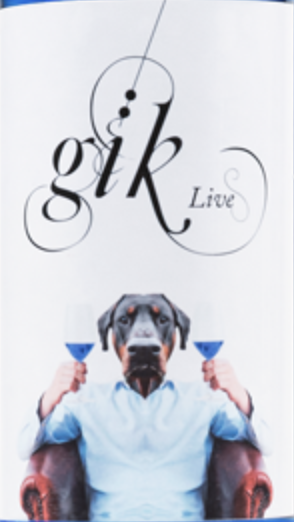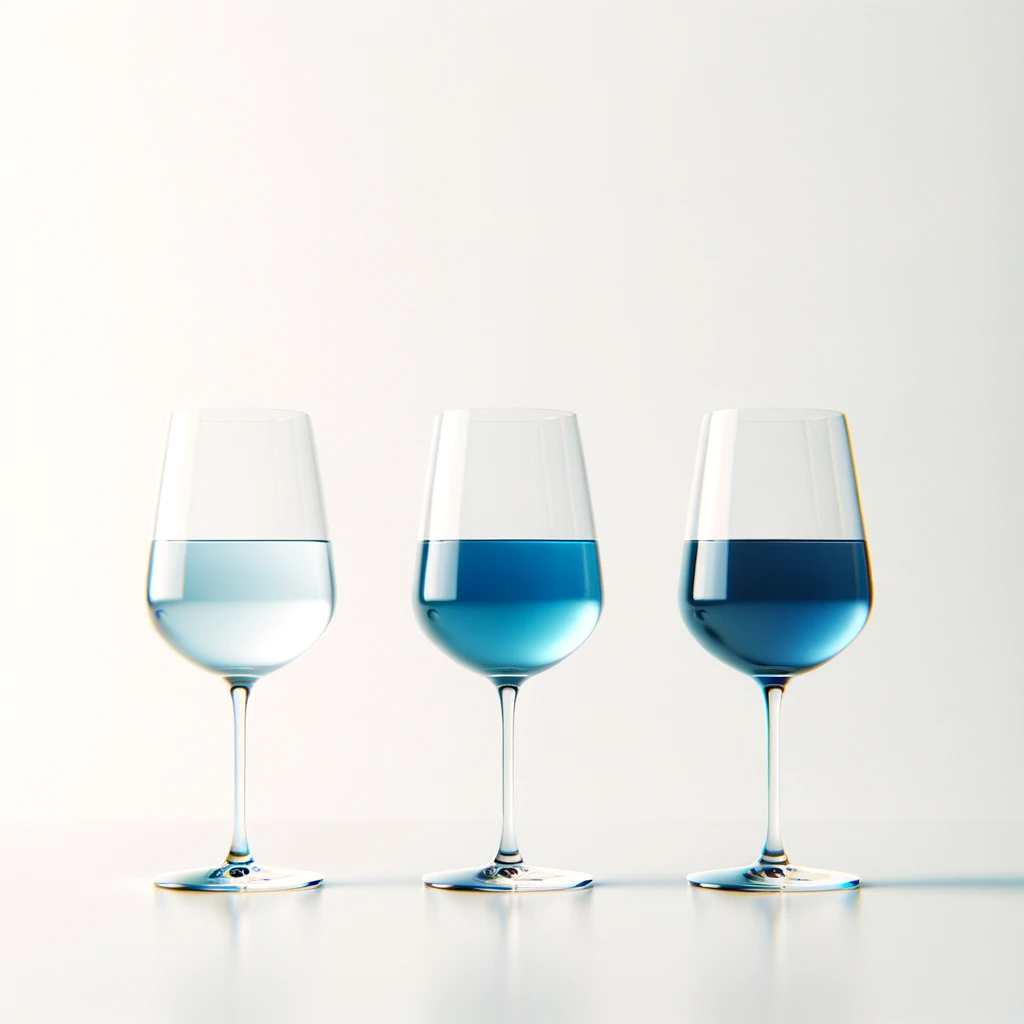Blue Wine: A Unique Twist on Tradition
If you've been to a wine store lately, you may have noticed that blue wine is starting to appear on the shelves. So, what is blue wine, and how does it compare to red and white wines?
Discover the Charm of Blue Wine
Blue wine is a refreshing addition to the wine world, known for its unique, eye-catching color. This vibrant hue comes from anthocyanin, a natural pigment in grape skins, also found in blueberries and raspberries. More than just its color, blue wine is appreciated for its sweet, fruity taste, reminiscent of blue raspberry candy. It's a lighter alcohol option, ideal for those seeking a novel and delightful wine experience.
Gaining popularity, especially among younger enthusiasts, blue wine is perfect for a refreshing aperitif, a creative cocktail, or simply as a conversation piece. Explore the captivating world of blue wine and add color to your wine journey.
Gïk Live! and the Rise of Blue Wine
The story of blue wine starts in Spain with Gïk, founded in 2014 by a group of entrepreneurs eager to shake up the traditional wine world. Their goal was to create a wine that resonated with the youth and break the stereotype of wine as an old-fashioned drink.
In collaboration with researchers from the University of the Basque Country, Gïk developed Gïk Live!, launched in 2016. With its vibrant hue from natural anthocyanin and organic additives, this blue wine quickly caught the public's eye.
Gïk focused on the natural aspects of their wine's color, avoiding artificial dyes, appealing to the health-conscious market. Gïk Live! was positioned as a playful, innovative wine, attracting younger consumers looking for something new.
Blue Wine Production: A Quick Overview
Grape Selection: The process starts with a mix of red and white grapes. Red grapes provide anthocyanin for the blue color, while white grapes enhance the flavor.
Crushing and Destemming: Grapes are crushed and destemmed, separating stems from juice and pulp.
Maceration: The mixture is macerated, allowing grape skins to impart anthocyanin into the juice.
Fermentation: This mix is then fermented with yeast, transforming sugars into alcohol, with careful monitoring to ensure proper alcohol content and flavor.
Filtration and Clarification: Post-fermentation, the wine is filtered and clarified for purity and consistency.
Color Adjustment: To achieve the blue hue, additional natural colorings like more anthocyanin or indigotine from indigo plants are added.
Sweetening and Stabilization: Non-caloric sweeteners and stabilizers are added to balance sweetness and acidity and maintain color stability.
Bottling and Labeling: Finally, the wine is bottled and labeled, ready for distribution.
While blue wine production is relatively new and varies slightly among producers, these steps provide a consistent framework, focusing on achieving the unique blue color while maintaining taste and quality.
Exploring the Unique Flavor Profile of Blue Wine
Blue wine stands out with its distinctive color and sweet taste, offering a different sensory experience from traditional wines:
Aroma: The aroma of blue wine is typically fruity, with hints of berries, cherries, or raspberries. Some varieties also exhibit floral or herbal undertones.
Flavor: Blue wine's primary characteristic is its sweetness. It often tastes like candy or blue raspberry, with a persistent sweetness on the palate. However, certain blue wines balance sweetness and acidity, adding complexity and a refreshing taste.
Texture: It usually has a medium-light body, smooth and mellow, without the tannins in red wines. This makes blue wine more approachable and easy to drink.
Comparison to Traditional Wines:
Versus Red Wines: Blue wine is much sweeter and lacks the tannic structure of red wines. It's also lower in alcohol, contributing to a lighter, more refreshing profile.
Versus White Wines: Compared to white wines, blue wine tends to be sweeter, with a less crisp finish. Some blue wines, however, aim to mimic the freshness of white wines while maintaining their signature sweetness.
Blue wine offers an unconventional taste experience away from classic wine categories. Its appeal lies in its sweetness and fruity notes, attracting those who favor sweeter drinks. While not a traditional wine in the strictest sense, blue wine has become a refreshing and innovative choice in the wine world.
Blue wine, while increasingly popular, is still a unique find. Here’s where to look for it and how to serve it:
Where to Find Blue Wine:
Specialty Wine Stores: These stores, especially those known for carrying unique or innovative selections, are a good place to start.
Online Retailers: Various online shops offer blue wine, providing a broader selection and the convenience of home delivery.
Restaurants and Bars: Look for establishments known for their trendy beverage menus; they might serve blue wine as an aperitif or use it in cocktails.
Serving Blue Wine:
Temperature: Serve blue wine chilled, ideally between 45-50°F (7-10°C), to bring out its fruity flavors and maintain its refreshing quality.
Glassware: Use clear stemware to highlight the wine's striking color. A tulip-shaped glass or a standard white wine glass works well.
Freshness: Blue wine is best when fresh. It's advised to enjoy it within a year of purchase. Keep it in a cool, dark place to preserve its quality and the vibrant blue hue.
Whether a wine lover or simply curious, blue wine offers a unique tasting experience, combining innovative winemaking with a visually stunning presentation.




